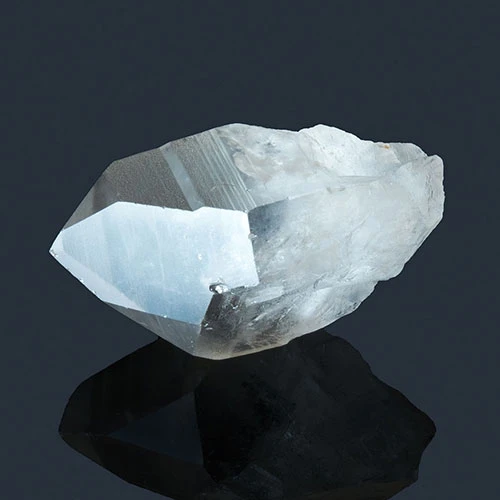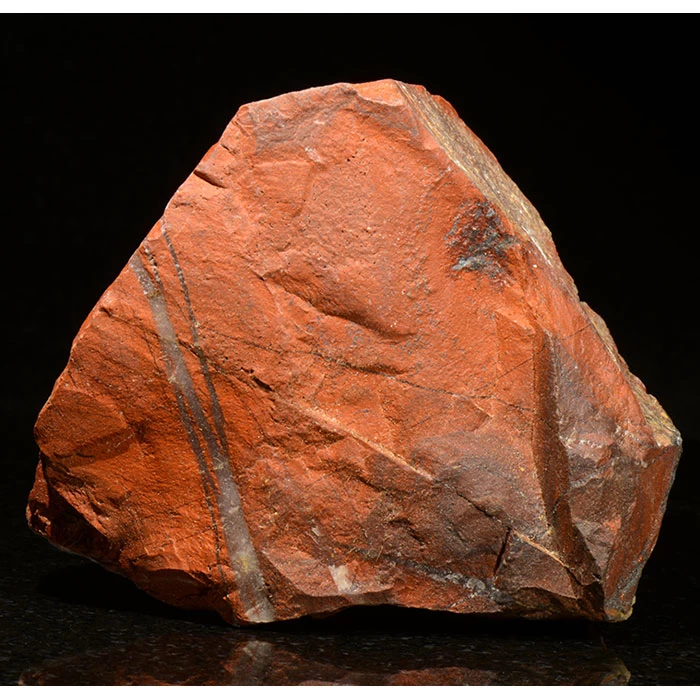Does Tigers Eye Contain Asbestos?

Crocidolite in Tigers Eye
Despite tigers eye being one of the most popular minerals, concerns about it containing asbestos have surfaced recently.
As word spread, especially through articles online, some people have become nervous about handling it.
In this article, I hope to address any concerns you may have about the mineral tigers eye. I'll also explain why the presence of crocidolite, a type of asbestos, poses no risk.
Let me make this clear from the start, tigers eye, whether rough or polished, is completely safe to handle and to have as part of your collection of rocks and minerals.
What is Asbestos?
Asbestos is a group of six silicate minerals. These are actinolite , amosite, anthophyllite, chrysotile, crocidolite and tremolite. With the exception of tremolite and actinolite, all were once widely used on an industrial scale.
Asbestos minerals have crystallised to form sharp, needle-like fibres. Because they're mostly microscopic, they're invisible to the naked eye.
Crocidolite fibres can break down even further into particles so small they become airborne. When disturbed, the fibres splinter. This characteristic is fairly unique to asbestos minerals.
The fibres are exceptionally strong and highly resistant to heat and chemicals. They were once spun into thread and woven into cloth, which enabled them to be used for textiles or garments that needed to be resistant to heat.
The protection from heat offered by asbestos made it ideal for use in protective clothing worn by firefighters. It was also used in other industries where protection from extreme temperatures was needed.
Asbestos was widely used in many household items, including oven gloves, ironing board covers, upholstery and carpets. Its use in construction, particularly for insulation, is well known.
Asbestos has many uses when combined with other materials. It's relatively lightweight, doesn't dissolve in water or acids, and being available in abundance meant it was cheap to produce.
The first article on the dangers of inhaling dust from asbestos was published in the British Medical Journal in 1924. Regulations were swiftly introduced to protect those who worked with it.
By 1930, it had been confirmed that inhaling asbestos dust/fibres could lead to serious respiratory diseases, cancers and other illnesses.
Crocidolite is considered to be the most hazardous type of asbestos. Also known as blue asbestos or the mineral riebeckite, it has exceptionally fine needle-like fibres that makes them easy to inhale. They're also very sharp.
Crocidolite is the type of asbestos present in the mineral tigers and also pietersite.

Until quite recently, it was believed that the crocidolite in tigers eye had been replaced with silicon dioxide over millions of years.
In geology, when one mineral replaces another, the process is known as pseudomorphism. A pseudomorph has the appearance of one mineral but is actually another. Although the shape or crystal structure of the original mineral remains the same, the mineral itself has changed. A new mineral has replaced the original one.
Pseudomorph literally means 'false form'.
This theory was first proposed in 1873 and had never been questioned further. In fact until 2003, tigers eye was one of only a few minerals never to have been analysed using modern equipment.
For more than 125 years, geologists believed the crocidolite in tigers eye had been replaced by quartz (crystalline silicon dioxide).
In 2003, Peter Heaney and Donald Fisher of Pennsylvania State University carried out an in-depth study. It revealed that tigers eye was in fact composed of crocidolite and quartz. The crocidolite, however, was found to be encapsulated within the quartz. As such, it's securely locked away and poses no immediate risk. The orientation of the crocidolite fibres causes the optical phenomenon known as chatoyance. The extent to which this can be observed depends on the skill of the cutter.
The orientation of the crocidolite fibres causes the optical phenomenon known as chatoyance. The extent to which this can be observed depends on the skill of the cutter.
Chatoyance comes from the reflection of light off bands of parallel fibres within the stone. It's best seen in material that's cut as a cabochon.
Products containing asbestos are still widely found in domestic environments. As long as they're in good condition and left untouched, the asbestos usually poses no risk.
Asbestos only becomes dangerous if raw dust or fibres are released into the atmosphere and inhaled. With that said, it takes a considerable amount of exposure for asbestos-related conditions to develop. Most people who become ill were exposed to high levels of asbestos for many years, usually in a work-related environment.
Having rough or polished tigers eye as part of your mineral collection poses no risk.
Of course, cutting or grinding tigers eye is hazardous, but that applies to many minerals. Dust particles from quartz, fluorite, pyrite, apatite, and many other minerals can be just as dangerous.
The dust from malachite is highly toxic because this green mineral is an ore of copper. Precautions must always be taken when cutting, grinding, sanding and in some cases even polishing natural minerals.
So, to answer the original question, does tigers' eye contain asbestos? Yes, it does, but because it's encapsulated within the quartz, dust or fibres cannot escape into the atmosphere.
Article Photos
The tigers eye sphere at the top of this article is from our collection.The riebeckite is displayed in the Smithsonian Museum of Natural History, Washington D.C. Photo by Stone Mania.
The polished tigers eye and malachite tumbled stones are also from our collection.
Pop-up photos: Actinolite, pseudomorph goethite after pyrite, pyrite - Courtesy of Stan Celestian. Tremolite and chrysotile - Courtesy of Ron Wolf. The quartz, fluorite and apatite are from our collection.
















